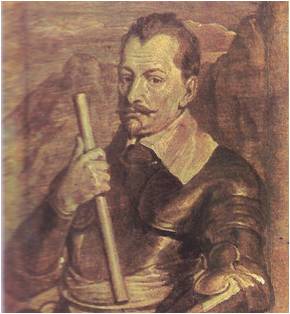Germany’s generals had for some time expected that they would have to fight both France and Russia, and Count Alfred von Schlieffen had devised a battle plan that took this into consideration. The Schlieffen Plan was a good one and it might well have brought the war to an early end — if General Helmut von Moltke, who succeeded Schlieffen as the German commander, had followed it. The plan called for the German army to be divided into an eastern force and a western force. Russia, vast and with few good roads or railroads, would need more time than France …
Read More »Tag Archives: Baltic Sea
Japan Meets the West 1853-1905
The date was July 8, 1853; the place, Yedo, a sprawling collection of wooden houses overlooking an arm of the Pacific Ocean. Yedo, later known as Tokyo, was the chief city of the Japanese islands, off the east coast of Asia. It was larger than London or Paris, but since Japan had been out of touch with the rest of the world for centuries, few foreigners knew it. Yedo was also the residence of an official called the shogun, who theoretically governed the country in the name of the emperor. As they stared out at the bay that day, the …
Read More »Russia Under the Tsars 1462-1796
IN THE LAST PART of the fifteenth century, the monks and courtiers of Moscow began to say that Moscow was destined to become the “Third Rome.” The first Rome, they said had been great as the centre of Christianity; but when the Romans had recognized the pope, Rome had been punished by destruction. The second Rome had been Constantinople, the centre of the Orthodox Church; but Constantinople, too, had briefly recognized the pope, and it, too, had fallen. Now Moscow, where the Orthodox faith still remained pure, was to become the Third Rome — the great centre of the Christian …
Read More »The War Spreads 1625 -1648
THE BLOOD-LETTING in Germany aroused new ambitions in many of the kings of Europe. In Denmark and Sweden, the strong Protestant king: who were taming opposition at home began looking to Germany as a land ripe for conquest. Furthermore, in attacking Germany they were also attacking the hated power of Roman Catholicism. Quickest of all to act was Christian IV, king of Denmark. Christian did not doubt that he was equal to the task. At the age of five he had learned fencing and the use of firearms‚ waking at five each morning and practicing long hours. He became king …
Read More »Fury from the North 814-1042
“. . FROM THE FURY OF THE NORTHMEN, Good Lord, deliver us.” Until recent times, this line was included in the prayer book used by the Church of England. The raids of the Norse Vikings on Britain were so terrible that the victims never forgot them. For generations the memory of the savage Norsemen was kept alive and Englishmen repeated this prayer for more than a thousand years. It was not only Britain that felt the fury of the Norsemen; they raided the European continent as well. The Norsemen’s ships themselves seemed to threaten terror. The hull of a Viking …
Read More »



